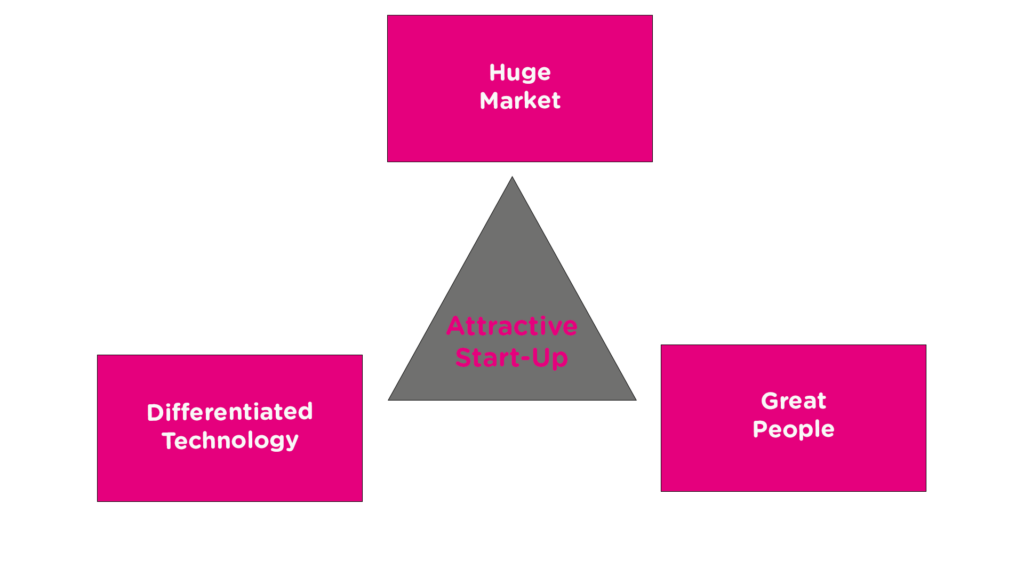Whether it’s real estate, the stock market, cryptocurrency or venture capital, the perfect investment strategy doesn’t exist. Countless books have been written on the subject yet many Venture Capitalists find themselves chasing the “secret sauce” of the perfect investment. Defining your investment strategy from start to finish is the key to success, the old saying rings to mind “Fail to prepare, prepare to fail”…
Entering into a new investment is a daunting task by its very nature, especially for a relatively young or modest VC fund that needs to consider how this latest venture can affect its portfolio down the line. Similarly, the term “exit strategy” can raise a whole host of emotions depending on the investor you ask. Today, we look at the areas that need to be considered by Venture Capitalists when defining your strategy for success….
Deciding Your Entry Point
The Venture Capitalists decision-making process will likely determine the entry point. However, let’s take a look at the common uses for VC investment at the various funding stages;
Seed Stage: Research and development are typically the major objectives in the early funding rounds. Market research or the expansion of the team may also be conducted with the funds.
Start-Up Capital: Similar to seed stage. Investors may divert VC funds for the recruitment of more management personnel, the refinement of products, or further research.
Early Stage, First & Second Stage Capital: There may be a significant increase in investment compared to previous stages. Often, this funding will help with production facilities, sales, and marketing.
Expansion, Second & Third Stage Capital: In this stage, growth can be exponential. VC funding enables expansion into additional markets and diversification and differentiation of products. Businesses typically receive expansion funding after operating for two or three years.
Bridge/Pre-Public Stage: Having achieved market traction with its products and services, the company may now consider going public. You can use the funds for;
- A merger or acquisition
- Attempt to drive out competition through price reductions or other methods
- Initiating public offering financing
There is a multitude of reasons why an investor might choose to enter at any of these aforementioned stages. The decision can depend on the investment objective and the company in question. For further reading on the intrinsic details of funding rounds check out Ingenio’s excellent infographic.
What quality’s do you NEED to see before investment consideration?
They say that the cream always rises to the top. But when you’re dealing with potentially thousands of applications it really isn’t that simple. How do you go about separating the great from the exceptional? Before even considering investing the start-up needs to demonstrate the following;
- Global marketplace
- Differentiating/Innovative tech
- Exceptional people
For a founder to become the next biggest tech mogul expect to see the following in spades;
- Courage: The ability to keep going irrespective of adversity & a strong determination to succeed.
- Genius – Outstanding innovative ideas & a totally unique mentality and mindset.
-

Entering into a new investment is a daunting task by its very nature, especially for a relatively young or modest VC fund that needs to consider how this latest venture can affect its portfolio down the line. Similarly, the term “exit strategy” can raise a whole host of emotions depending on the investor you ask. Today, we look at the areas that need to be considered by Venture Capitalists when defining your strategy for success….
Venture Capitalists Need Companies in Hyper-Growth
The best trait an investor can develop is the ability to identify companies with the potential for major success and growth. Not every investment will be a unicorn and not every company can be the next Microsoft, however, that doesn’t mean they are not worth your investment consideration.
Clued-in investors will have their ear to the ground keeping up to date with the latest market development. Without a doubt, some of the most promising industries today that will be the bedrock of tomorrows future include green energy and Technology. Tech is a broad label, particularly we are talking about SaaS. SaaS has had an impact on almost every industry and will continue to do so – one can assume that Cybersecurity will be absolutely crucial as this technological landscape develops. One prominent example is Darktrace a British-American cyber defence company. Darktrace IPO’ed in May 2021, and at this time of writing October 2021, their stock has risen over 150% with no signs of slowing down. This is exactly the type of company you need to be vigilant for.
Case Study: Xtremepush – Client Success Story
One of the most illustrious clients which we have had the pleasure of working with over the past couple of years has been Xtremepush. Xtremepush is a global Multi-Channel Experience and Engagement Marketing Platform. A Dublin-based company, Xtremepush has offices throughout the UK, US, and East Europe.
A key milestone in the company’s lineage was the acquisition of Emailcenter, a leading UK Email Service Provider in early 2018. Xtremepush are recognised global leaders in the MarTech space which has led to curating a roster of top-in-class clientele.
In July of 2021, Xtremepush raised a whopping $33m towards its global expansion. Xtremepush will be doubling its workforce, opening up new roles in software development, sales and marketing, finance and operations over the next year.
Ingenio has been privileged to aid Xtremepush in hiring some of its C-Level executives, and we are delighted to have helped them along the journey to success in some very small way. Connecting the right person with the right role is a catalyst to success and it’s what fuels the passion behind what we do here at Ingenio – If you would like to find what we can do for your business to help achieve its goals reach out for a chat today!
What does the future hold for Xtremepush?
Xtremepush has achieved year-on-year growth of over 100%.
“My aspiration for this business is to be one of the top 3 multichannel engagement providers, globally.” says, Tommy Kearns, CEO.
With the phenomenal impact Xtremepush has made since its inception, achieving this goal and then some is certainly within Xtremepush’s future!
It’s been phenomenal to watch what Xtremepush has achieved this VC funding stage is only a stepping stone in their progression, Xtremepush is in our opinion, a company in hyper-growth that should be on the watch list of any eagle-eyed investor.
Venture Capitalists Take The Portfolio In To Consideration
You can’t take about individual investments in a vacuum. A poor investment or a successful investment has the potential to affect your entire portfolio as a whole. They are intrinsically linked and are one and the same. Let’s take a look at some of the core principles of a portfolio strategy;
You’re aiming for a home-run; Invest in every venture as if it was your last
- In general, fund returns tend to come largely from a few exceptionally successful investments. A typical fund generates 90% of its returns from just 20% of its investments.
- Home runs make up for poor returns. In fact, the most successful funds have more losing deals than the average ones.
- About 65% of venture deals result in a loss.
Finding the elusive “Unicorn” – Is it a science or art?
- “Unicorn” ventures present the potential to 50x your investment, however, the probability of “catching a unicorn” ranges from 0.07% to 2%.
- Make MANY investments and play the odds. It would take 50 investments to find a 2% chance of finding a unicorn according to this philosophy.
Following on is crucial – press the winners and capitalise on the success;
- VC funds should allocate 66% of their funds to follow-on investments.
- Investors can maintain their ownership stakes in start-ups by following on. The outcome is better governance and higher absolute dollar returns upon exit.
- Venture managers are tested by follow-on investments because they are faced with the sunk-cost fallacy of trying to pour more cash into a losing investment or investing in a winner.
-
Preparing For The Exit
Deciding on an exit strategy can be among the biggest challenges faced by Venture Capitalists. Every investment strategy needs a solid contingency plan. An exit, or a “liquidity event” should have no negative connotations, however, deciding how and when to exit can be an anxiety-ridden decision for many VC investors.
Most methodical investors will have an ideal exit plan in mind and will plan accordingly. However things change, and life doesn’t always go to plan. How your business performs will have a direct effect on which exit you and your investors choose. Adapt to the situation and don’t be afraid to change course from your initial exit strategy.
Exit strategies take on different forms and are situations dependant, let’s take a look at some of the most common strategies;

Acquisitions and mergers: These are frequently the most common exits for venture-backed businesses. Every day, industry giants like Microsoft and buying relatively small companies left, right and centre through mergers and acquisitions to add complementary skills to their roster. M&As are also the easiest method to facilitate R&D for large companies by allowing them to purchase innovations from smaller companies without having to create the technology in-house from scratch.
Initial public offering (IPO): Making your stock publicly listed and traded is arguably the most exciting method for exiting. It brings prestige and reputation that no other exit strategy can rival. An IPO has the potential to be one of the most financially profitable exit strategies.
Management buyout (MBO): Management of the company purchases all assets and operations of the start-up. Venture Capitalists can get a direct return from the start-up, rather than having to find new investors through M&A or IPO. Streamlining an organization’s operations and marketing can enhance profitability, but doing so often requires substantial funding.
Expansion Will Lift IPO Valuation
What markets are most attractive to a founder is situation dependant, however, if a company has the potential for expansion this is quite often the most desirable and profitable business move.
European expansion has many benefits to both founders and investors. Perhaps most interestingly to VC investors massive uplift on IPO valuation that expansion can potentially have.
International expansion fuels later-stage growth. Increasing scale improves a company’s ability to grow revenue at a sustainable rate. International revenue allows companies to expand more quickly at IPO than they would have before expansion.
Expanding in Europe contributes significantly to exit value: top-quartile expansions lift Enterprise Value by 55%, which is roughly $740 million for a company about to go public.
Written by James Coffey

